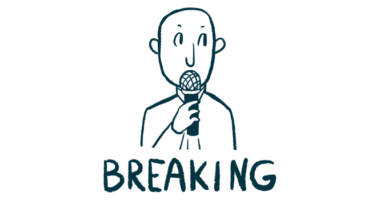Sarepta Gains Rights to MyoAAV, Likely Vector for DMD Gene Therapy
More efficient vector expected to better target muscle cells in delivering therapy

Under an agreement with the Broad Institute, Sarepta Therapeutics has acquired an exclusive license to the gene therapy vector MyoAAV in potentially treating Duchenne muscular dystrophy (DMD) and several other neuromuscular and cardiac indications.
MyoAAV is a new vector for delivering genetic therapies to cells, with evidence that it can do so more efficiently and at lower doses than previous vectors.
“Research published by Broad Institute, and so far corroborated by Sarepta’s own internal research, reinforces the potential of MyoAAV as a breakthrough next-generation approach in genetic medicine delivery,” Doug Ingram, president and CEO of Sarepta, said in a company press release.
DMD is caused by mutations in the gene that provides instructions for making dystrophin, a protein that’s important for preventing damage to muscle cells. The overarching aim of gene therapy for DMD and other forms of muscular dystrophy is to deliver a healthy version of the mutated gene to a patient’s cells, particularly the muscle cells that are mainly affected by the disease.
MyoAAV is a platform to deliver genetic cargo to muscle cells. The vector was developed using an adeno-associated virus, or AAV, a virus commonly used in gene therapy applications because it is easy to manipulate in a laboratory and doesn’t cause serious illness in people. By altering the outer shell of the virus, researchers designed the MyoAAV vector to be better at targeting muscle cells than earlier vectors.
Vector raises gene expression in skeletal, cardiac muscle
According to Sarepta, preclinical experiments in non-human primates indicate that the MyoAAV platform can deliver 25–50 times greater gene expression to skeletal muscles (the various muscle needed for movement) compared to standard AAV vectors. Delivery to heart muscles with MyoAAV raises gene expression by 10 to 15 times compared to conventional vectors.
The MyoAAV vector is also reported to reduce by 50% the gene therapy’s delivery to cells in the liver, where it raises safety concerns. The overall higher efficacy of delivery means that MyoAAV may be used at lower doses than current AAV-based gene therapies now in development.
“The MyoAAV platform is noteworthy for its broad applicability across multiple disease states and will further advance the science of genetic medicine allowing for swift advancement of treatments into the clinic across a variety of conditions, including larger rare cardiac and neuromuscular indications,” said Louise Rodino-Klapac, PhD, executive vice president, head of research and development, and chief scientific officer at Sarepta.
Under its agreement with the Broad Institute, Sarepta will receive worldwide commercial license grants for MyoAAV in DMD and four other neuromuscular and cardiac indications. Sarepta also has the option to license further targets in the future.
Broad, a research center affiliated with the Massachusetts Institute of Technology and Harvard University, will receive an upfront payment with future royalties and milestone payments. Financial terms were not disclosed in the release.







